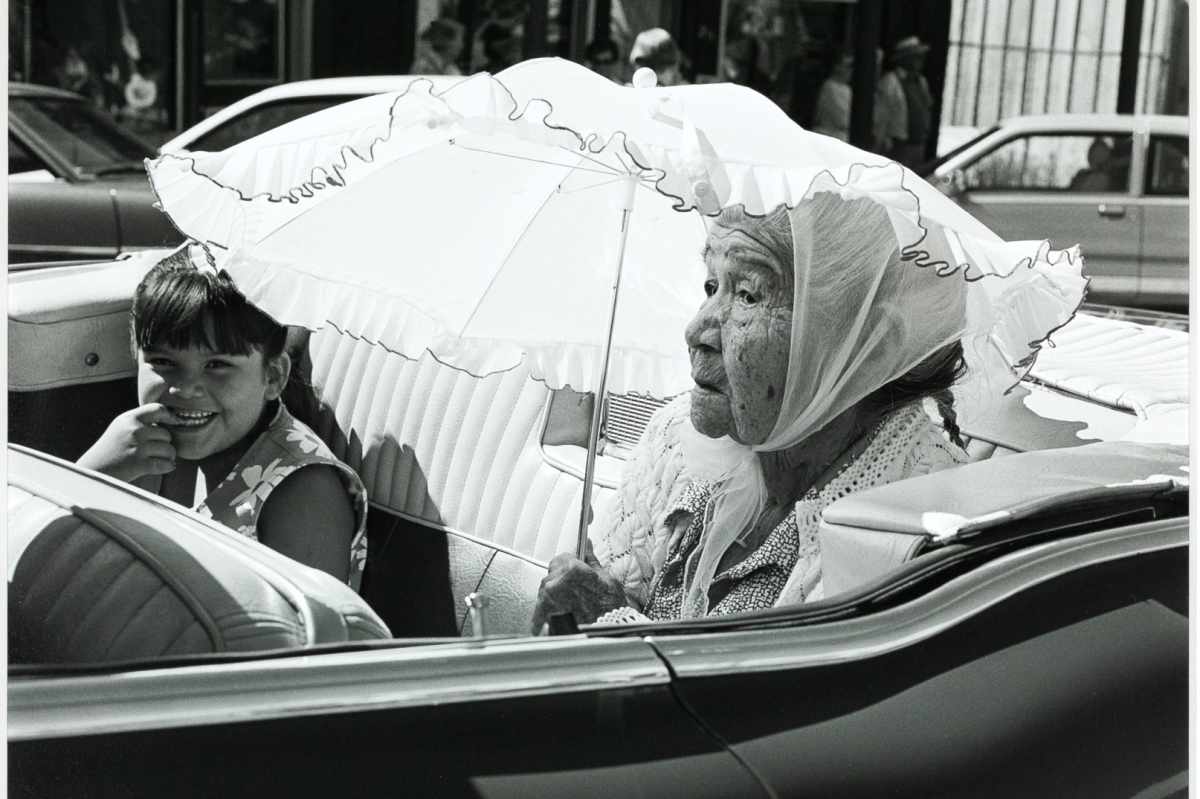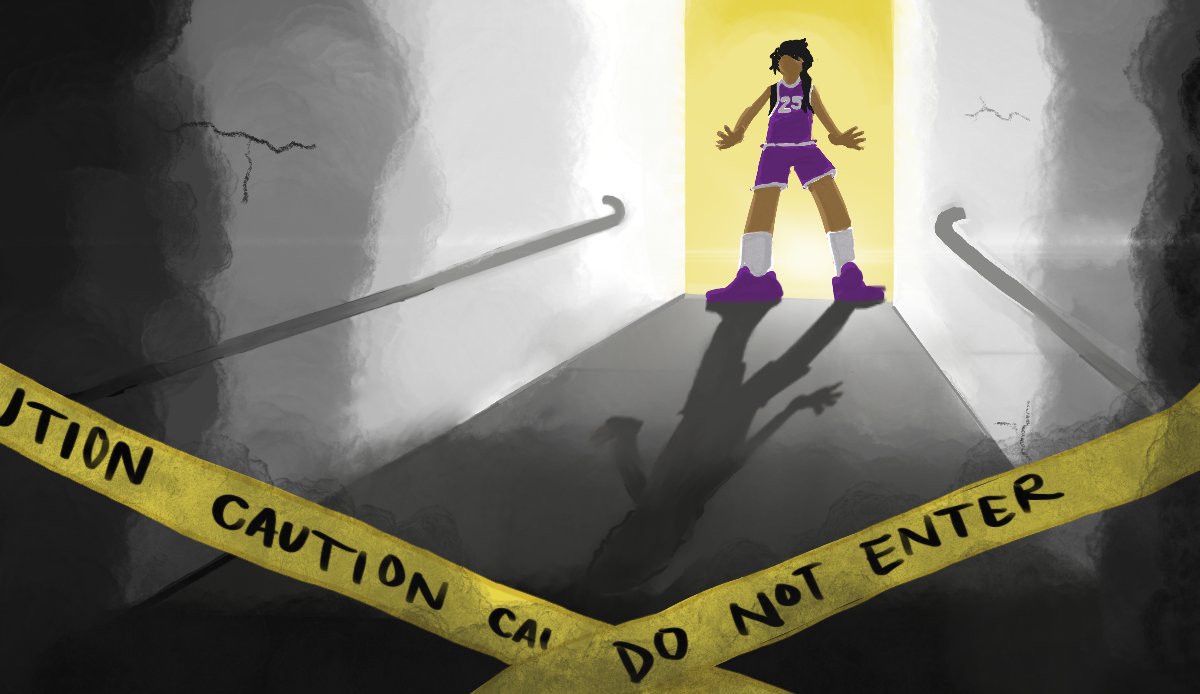This short podcast was published by The Association of LGBTQ+ Journalists’s CONNECT Student Training Program on Sep. 7, 2024.
DESMOND: Drivers come fast down Santa Monica Blvd. The cars turn through crosswalks in front of oncoming pedestrians. They blow through stop signs and red lights, and hit illegal u-turns in the middle of the street. But that’s just another day in West Hollywood. West Hollywood is a walkable oasis in car-centric LA. The sidewalks fill with pedestrians every night going between bars and restaurants. Though community members find the streets of West Hollywood to be safer than much of LA, distracted, impatient drivers are a growing problem. In 2023, traffic deaths outnumbered homicides in Los Angeles, according to reporting from the LA Times earlier this year. And West Hollywood is no exception — just a few days ago, on Sep. 2, a car swerved into a pedestrian on Santa Monica Boulevard and Formosa Avenue. According to The West Hollywood Times, the victim was hospitalized.
DAVID: “People have been killed actually, because drivers on Santa Monica Boulevard don’t care very much. They’re not very safe, and given there are cell phones and other distractions, pedestrians have to be wary when crossing anywhere around this neighborhood.”
DESMOND: That’s David. He’s lived near the intersection of Santa Monica and San Vincente for 25 years. He said he and his husband chose to live in West Hollywood specifically for its walkability.
DAVID: “I love the fact that I could walk everywhere. I could walk to the grocery store. I could walk to my gym, could walk to a coffee shop, and restaurants. […] So it’s a very entertaining neighborhood. There’s a lot of history here and it’s been one of the, you know, gay meccas for decades. So that’s what drew my husband and I to this area in the first place.”
EMILY: “I’m Emily, I’ve lived in LA 10, 11 years. I’ve been here forever, I love it here, but I do wish it felt safer.”
DESMOND: Emily walks in this neighborhood every day, often with her dog. A few years ago, she was hit by a car on one of her daily walks.
EMILY: “Luckily I didn’t have my dog with me that day because she would have been hit as well.”
DESMOND: The driver ran a stop sign and struck her while she was in a crosswalk.
EMILY: “It’s changed how I am crossing the street ever since.”
BERT: “So I mean, I had a couple close calls myself here.”
DESMOND: That’s Bert. He manages Koonz Hardware on Santa Monica Boulevard. His father and uncle took over the store from its original owner in 1977.
BERT: “I’ve seen a lot of changes. I mean, I’m 59 years old. I grew up working here. [ …] We get a lot of people coming here and it does impact the traffic. However some of the drivers right here are very impatient. It seems like some people feel a little entitled, so they don’t necessarily follow regular rules and regulations like stopping before going through crosswalks.”
DESMOND: Despite the risks posed by major thoroughfares like Santa Monica Boulevard, San Vincente Boulevard, and Fountain Avenue, this historic area is a sacred place for the people who call WeHo home.
SMART: “Queer people flock to where other queer people are.”
DESMOND: That’s Michael Smart. He’s an associate professor of urban planning at Rutgers University. He researches historically gay neighborhoods and how they evolve over time.
SMART: “West Hollywood, and most gay neighborhoods, are in an urban area, dense… they’re exactly the kinds of places where we see a lot of increase in injury and death from being struck by a car. It’s where people are walking and it’s where people are driving like maniacs.”
DESMOND: He said car accidents and pedestrian deaths have a big impact on the way people relate to their neighborhoods.
SMART: “In places where people don’t feel – and this has been well researched – where people don’t feel safe, they do less. Their lives are less fulfilled. They accomplish fewer tasks during the day. They see fewer people. They just leave the house less.”
DESMOND: And that has an impact on West Hollywood’s bars, restaurants, and retail stores. John Erickson is the current mayor of West Hollywood.
ERICKSON: “Walkability is a huge thing for business success as well as the success of our cities and neighborhoods.”
DESMOND: For Erickson, the fight to keep West Hollywood walkable and safe is personal.
ERICKSON: “People are getting harmed, if not killed, in certain areas because of people speeding and using our neighborhood streets as freeways. And so that’s why we also have to do all that we can to improve our streets — so people don’t use them as freeways because they’re our neighborhoods. It’s literally my backyard.”
DESMOND: In 2015, LA adopted an infrastructure plan to reinvigorate public transit, bike infrastructure and pedestrian safety by 2035. But the city’s progress making those improvements has been slow going. So slow that nearly ten years later, only five percent of those improvements have been completed. This past March, LA residents voted to pass a ballot measure called Healthy Streets LA, often called Measure HLA by locals. The new law effectively forces the city to make good on implementing the safety improvements it committed to a decade ago.
ERICKSON: “And here’s the sad thing about Measure HLA– it didn’t have to happen if the city just followed its already-approved pedestrian and mobility plan, right? […] And the fact that nonprofit groups and other people had to come out and do that and spend money is just, it’s maddening. What a waste.”
DESMOND: So how do the people of WeHo hope safety will improve in their neighborhood?
DAVID: “I wish somehow they could do a traffic reduction on San Vincente, because it has more actual residents living there and walking around there than it does have commercial, you know, interest.”
EMILY: “Just people-wise, I wish people would be a little bit more, you know, kind.”
BERT: “I don’t necessarily want more traffic officers out there. I just want people to just be conscious about what their surroundings are.”
DESMOND: In the meantime, locals advise that the best way to stay safe when walking around WeHo is to keep your head up, and keep your eyes off of your phone.
BERT: “We just have to be very diligent, and just be careful. But other than that, I mean, I appreciate people coming here. We need the business.”
Correction 9/11/24: This story originally stated that the victim of the Sep. 2 accident was reportedly “in critical condition.” However, The West Hollywood Times reported the victim appeared “badly injured,” but the extent of their injury was unknown.



























